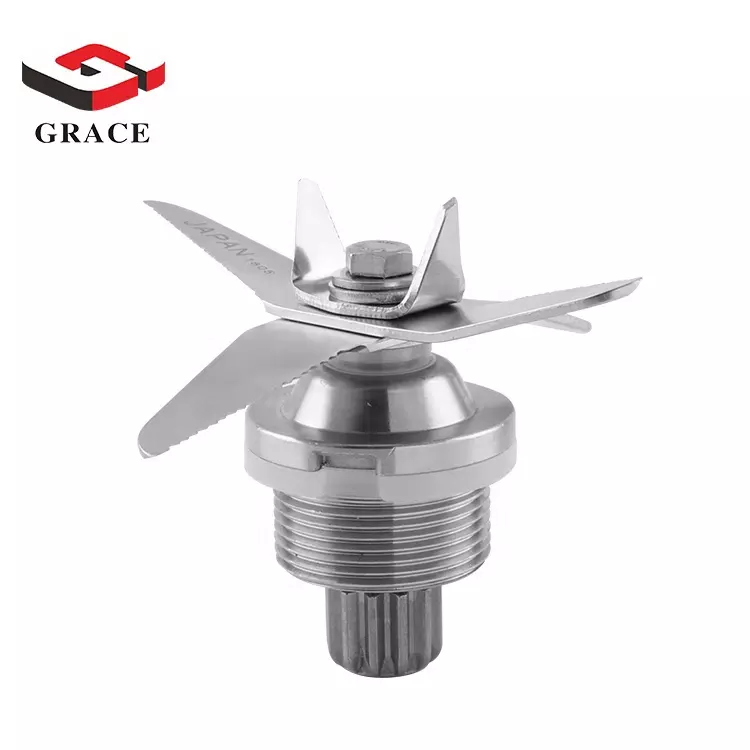200 FAQ, Bakery Equipment Solution, Chain Hotel Kitchen Equipment, Fast Food Restaurant Kitchen Equipment, School Canteen Kitchen Equipment, Star Hotel Kitchen Equipment, Western Restaurant Kitchen Equipment
Blender VS. Extractor or Nutri blender:What’s the difference ?

Blender and nutrient extractor are often confused by consumers, with similar appearances but essential differences between the two. From the perspective of blade structure, blender or food processors are usually equipped with 2-4 flat or wavy blades, with a rotation speed between 8000 and 22000 RPM, suitable for processing soft ingredients like puree and crushing ice too. The nutrient extractor is also known as high speed blender or Nutrient blender adopts a 4-8 piece clock blade design, enhanced with carbon steel material for durability. The speed can reach 30000 to 48000 RPM, and special models can even exceed 50000 RPM. This high speed, combined with the principle of blunt blade compression, can effectively break the plant cell wall.

The functional differences are reflected in the scope of processing ingredients. The blender is capable of tasks such as thick juice/puree making,vegetable puree processing and crashing ice, but has limited effectiveness in processing nuts or coarse and hard fiber ingredients. The nutrient extractor can crush the whole fish bone, grind the black sesame to the ultra-fine powder of more than 300 meshes, and retain the dietary fiber in the soybean residue when making residue free soybean milk. Taking corn juice production as an example,which can completely liquefy the entire corn grain, while ordinary blender or food processors still need to filter the residue.
In terms of temperature control, a regular blender can reach a motor temperature of 70 ℃ after 3 minutes of continuous operation, while an extractor uses a copper wire motor combined with a dual air duct cooling system, with a temperature rise of no more than 45 ℃ after half an hour of continuous operation. There is a significant difference in noise performance, with the operating sound volume of the blender being about 75 decibels, equivalent to the sound of busy street environments. The working noise of the extractor machine generally exceeds 90 decibels, and high-end models can control the sound below 80 decibels through volume isolation design.However,in recent years,soundproof models are getting more common and popular,simply they equip one cover out of the jar for reducing noise,and it turns out not much difference over noise between the above mentioned two types of blenders.

From the perspective of usage cost analysis,an entry-level blender are priced between 90-110USD,an extractor/Nutri blender start at 150-300USD, and professional products exceed 500USD. The replacement cycle of consumables varies. The blades of the blender need to be replaced every six months, while the blunt blades of the extractor can have a service life of up to three years. In terms of power consumption, the 800W blender consumes about 0.1 kWh to make fruit and vegetable juice, while the 1500W nutrient extractor/high speed blender consumes 0.25 kWh to process the same ingredients.
The selection decision should be based on specific needs. For the production of infant and toddler complementary foods, it is recommended to use a wall breaking machine to achieve ultra fine grinding. Fitness enthusiasts who choose a high speed blender to make high protein drinks can better absorb nutrients.For daily use in small families, the cost-effectiveness of a blender is higher, especially when dealing with soft ingredients such as fruits & vegetables or crushing ice, where the difference in effectiveness between the two is not significant.
Special function configuration is an important distinguishing point. The vacuum nutrient extractor machine can discharge oxygen from the jar during stirring, delaying the oxidation and discoloration time of juice for more than 4 hours. Some models are equipped with heating modules to realize the integrated production of hot drinks such as boiling soybean milk and thick soup. In terms of intelligent control, high-end extractors come with more than 20 preset menu programs and automatic cleaning functions, while the operation interface of the blender is relatively simple.



